| Return to main page |
 |
 |
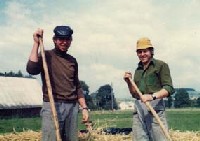 |
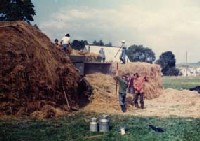 |
Figure 53: Villagers at work
|
B. Malinowski, 'Myth in primitive psychology' in Magic, Science and Religion and Other Essays, Glencoe 1948. |
Everyone except the Professor was stiff and sore the following day. He split the students up into smaller groups to conduct a household census of the village, while he drove off with his wife to the market town to buy fresh provisions. It took Tom and Ania only half the morning to visit the four farms allocated to them and collect basic questionnaire data concerning the individuals who lived there, their sources of income, and their consumption habits. The conversations were not very exciting. Tom expressed surprise when people described their food intake. 'For most of the year these villagers have no fresh fruit or vegetables,' he summed up afterwards. 'Where we live, seasonality scarely has any impact any longer on the food we consume, because everything is available throughout the year.'
The students were not invited into people's houses as it was obvious that they had no time for lengthy conversations. The potatoes were done, but there were still other vegetables to be picked, some hay to brought back to the barn, and grains to be threshed using the ancient machine that went from house to house during these weeks. Ania was discomforted by the dirt, the smells, and the flies that followed her everywhere.
Only in one house were they invited inside, to meet a Lemko lady who was too old to work, indeed too weak even to leave her bed. She was clearly dying. Another lady explained that she had taken the old woman into her home out of sympathy and human kindness, although they were not related. After her husband's death, the old woman had moved to live with his niece, in return for making over her own land and farm to the niece's family. But that family was plagued by social problems, said the lady. 'It's bad enough when a man drinks, but it's really the end if his wife joins in. ' The old woman had been desperately unhappy there, so the neighbour had intervened to provide her with a clean and peaceful refuge as she prepared to die. Ania was deeply impressed by this story, and by the gratitude she saw in the eyes of the old woman, who was attentive but speechless throughout their visit.
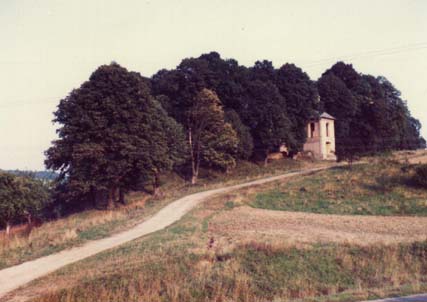
Figure 54: The path leading up to the village church
Afterwards they went on to visit the church, which was obviously Greek Catholic or Orthodox in origin, though a large sign proclaimed that it now served a Roman Catholic parish. The two traditions were side by side inside the building: stern eastern representations of Christus Pantocrator were modified by the smiling countenance of Pope John Paul II, the Madonna was present in both dark mysterious Czestochowa style and in bright Italianate variants. The dualism extended to the cemetery: around the church the graves were neglected, the eastern crosses badly rusted. A little further away they found the cemetery of the new, post 1947 community, with well tended graves and shiny new headstones.
They left the village via a track leading northwards which led them after a couple of hours to a larger village and a restaurant that provided them with their first square meal in two days. They tried asking the waitress for information about the history of the community, but she could not tell them much. 'They say that this building used to belong to a rich Jew, but he and all his family were shot by Hitler's people in 1942. We only have Poles here these days.' They followed a different route back to the village and the only human being they met all afternoon was a forester, who pulled up in his jeep and was fascinated to hear about their summer school course in anthropology. He was more keen to ask questions than he was to answer them, but eventually Tom managed to ask about the ownership issue. The forester replied: 'Don't you believe it when the peasants here tell you that the forests belong to them. Virtually every last tree you can see around here was planted by the socialist state, and I don't see why anybody should come along and claim them privately. In any case, it's impossible to connect present boundaries to the land that people claim they held in the past, since hardly any of it was properly registered. Forests should be for everybody, not a private windfall for a lucky few.'
The forester said he would show them something interesting and drove
them a few miles along a rutted track to a point where two streams joined.
They got out and found the remnants of a cemetery in a copse, but otherwise
no traces of a human settlement. 'This was one of many villages evacuated
in 1947 and never again reoccupied. I remember my father telling me how
he came here on a tractor and helped to tear the old buildings down, the
church included. They didn't need to look far for firewood in those days.'
 |
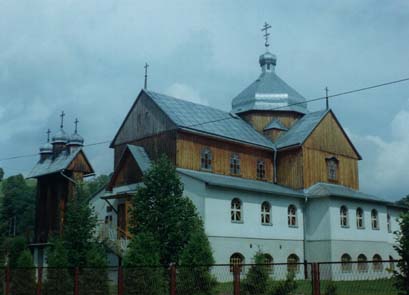 |
Figure 55 (i): Greek Catholic church and belfry at Turzansk and (ii) the new Greek catholic church at Komancza
Tom and Ania continued on foot, pausing only to admire some fine wooden churches, that had somehow survived these mid-twentieth century traumas. But a village nearby had since been subject to another trauma: this valley was now dominated by a large sawmill and grey concrete blocks for the workers, which looked as dismal as anything they had seen in the industrial suburbs of Cracow. 'Talk about showing sensitivity to a picturesque environment!' said Ania. From here they hitched a lift back to their campsite. Their driver had worked at the sawmill back in communist days: the job was highly sought after, a bit monotonous but far better than just helping out on the parental farm. 'I think the jobs are still popular, but they've been privatised, of course, and they've had to make a lot of workers redundant recently. I was lucky enough to be able to move on to a job in the city - it's not easy to do that nowadays. But I like to come back whenever I can in the summer, to help a bit on the farm and to enjoy a bit of hunting.'

Figure 56: Leaving work at the sawmill, Rzepedz
In the evening around the campfire the students compared their experiences. Some had tried to make calculations about the relative profitability of different crops. Tom was puzzled by the realisation that the villagers did not in fact produce the commodities which, according to the figures they themselves provided, should have been their rational choices. Ania was more struck by the fact that, if the interview data were to be believed, not a single inhabitant of this village had ever travelled in an aeroplane, while more than half had never travelled outside Poland at all, despite the close proximity of several state borders.
Several students had not managed to collect all the rudimentary data required by the Professor's questionnaire. Others said that they doubted the truth of what they had written down, or did not find their conversations very revealing. 'Don't worry,' Prof. Dylag reassured them. 'This is a very typical experience in fieldwork. Sometimes whole weeks and months go by, and you don't feel you are learning anything new. But all the time you are observing and you are earning their trust. That is why it is important to work with them and to eat the same food that they eat. I think that your one day in the potato field has given you a better understanding of what it feels like to be a peasant here than any amount of reading in the library.' And it was true that the students who had revisited the families for whom they had worked on the previous day reported the most positive receptions and illuminating conversations.
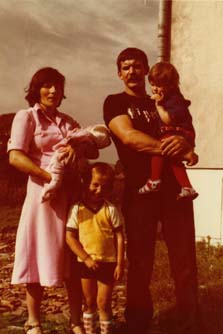
Figure 57: A Polish-Ukrainian couple and their children
Marek had interviewed several families at the upper end of the village, where most of the returned Lemkos were to be found. 'I'm convinced that not all of them were innocent victims of deportation in 1947,' he said. 'Some of them really did support the Ukrainian terrorists. At least they get on well enough today. I came across one case where a staunch Ukrainian had given his daughter in marriage to the son of one of a Polish immigrant. But the best story I heard all day concerned an old Lemko woman whose husband died last year. She had no children, so she moved in with her niece. But then some other Lemko neighbours interfered and effectively stole this bed-ridden old woman, just so that they could get their hands on her tiny pension! She's still living with this other family now, even though they're not even kin!'
Tom and Ania promptly gave their own account, based on what they had seen as well as heard, and another group of students was able to supply a third variant. Clearly this case had attracted a lot of attention and comment in the village this year. Dr. Dylagowa was gleeful. 'What a fine example of the perils and limits of ethnographic representation!' she exclaimed. 'One old lady is apparently dying, and we have at least three different interpretations of the circumstances.' The Professor agreed, but argued that, if only they were able to spend more time in the village, they might be able to determine which of the different opinions was nearest to 'the truth'. This reference to 'truth' sparked some lively discussion between them, which ended only when the last embers of their fire ceased to flicker. Tom went for a last brief walk alone and noted that several households seemed to be settled down in front of their televisions, perhaps watching the same late night films as their urban counterparts.
Ania was still feeling uncomfortable and she was not sorry to move on the next day. Not only was she dirty from head to toe, but she felt there was nothing more she wanted to know about this village, with its scattered dwellings and battered population. She found the formalities of farewell, over tea, crowded into the headman's kitchen, all rather tedious. Dr. Dylagowa was looking impatiently at her watch. The Professor noticed this. When they finally drove off he commented: 'We can't, of course, say that this is a typical Polish village. Every village is different. This is not a good time for sustained conversation, because the people have too much work to do. But I may try to come back in the winter and do a proper interview with that headman: he belongs to one of the few families that managed to avoid the deportations. That's why I wanted to make a good farewell.'
Ania couldn't help feeling that the Professor was only concerned with the headman's potential usefulness for some further research project, and was repelled by this realisation. Fieldworkers were basically only interested in extracting the data they needed for their projects. They, the visitors, could offer nothing in return. These peasants would be able to make no more use of a scholarly article or a book than the visitors would have been able to make of the ducks they had been offered after the potato harvest. Whether or not it could approximate to 'truth', anthropology suddenly seemed to Ania a morally dubious, exploitative activity.
| Return to main page |